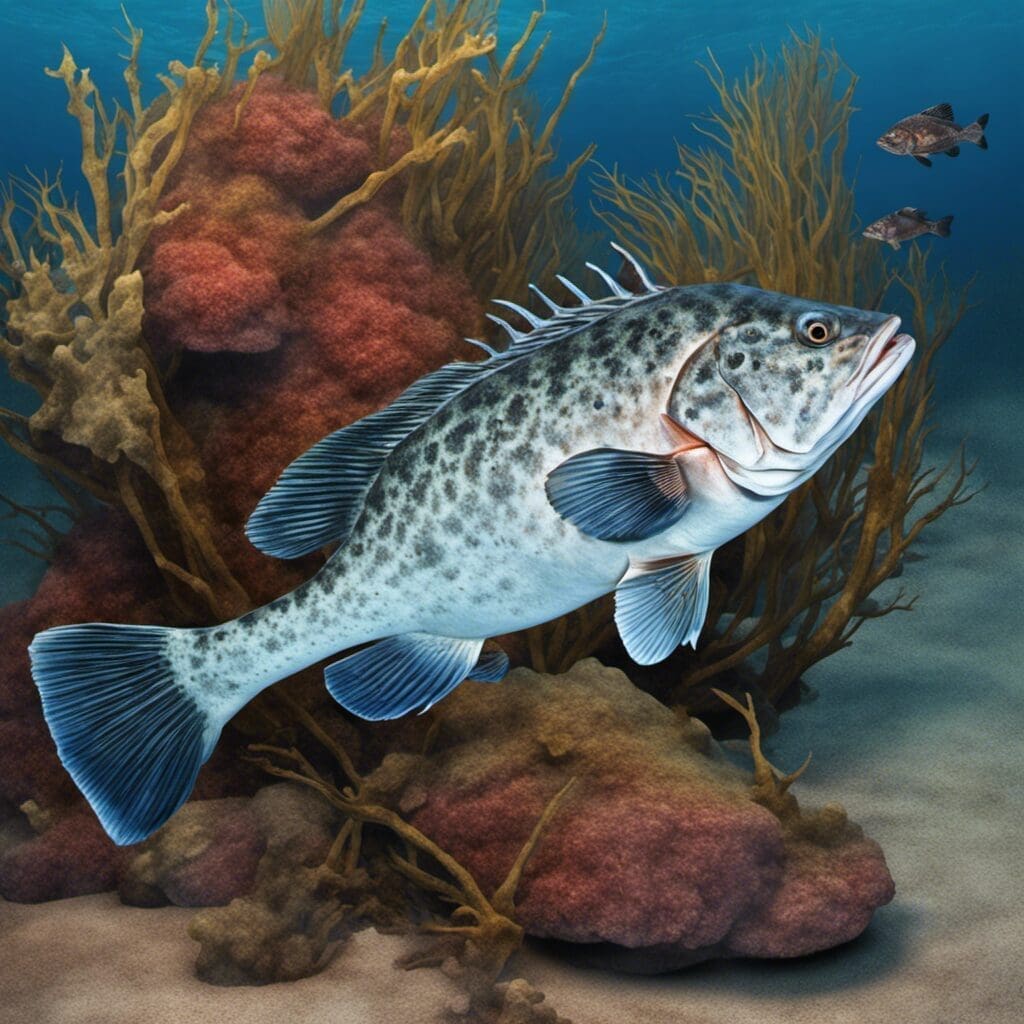Introduction
The Broomtail Grouper (scientific name: Epinephelus morio) belongs to the family Serranidae. These robust sea creatures are well-known for their distinguishing traits including an expansive mouth and deep body that narrows toward the tail, giving them the name ”Broomtail”.
Conservation Status
The Broomtail Grouper is currently listed as “Vulnerable” according to the International Union for Conservation of Nature (IUCN). Conservation efforts include seasonal fishing restrictions and catch limits.
Statistics
| Statistic | Average | Range |
|---|---|---|
| Length | 60 cm | 32-120 cm |
| Weight | 5 kg | 2-20 kg |
| Average Lifespan | 16 years | N/A |
Distribution
Native to the eastern Pacific Ocean, the Broomtail Groupers can be found from Baja California, Mexico to Peru. They have not been noted migrating long distances from their reef habitats.
Habitats
The Broomtail Grouper is chiefly found in tropical waters, usually within the depth range of 3 to 50 m. They favor warmer temperatures, found most commonly in regions where the temperature does not dip below 20°C.
When and Where to See
While the Broomtail Grouper can be found all year round, they tend to spawn in the warmer months of May and June. They are usually most active around dusk and dawn.
Best Fishing Locations
- Cabo Pulmo, Baja California, Mexico
- Guaymas, Sonora, Mexico
- Puerto Vallarta, Jalisco, Mexico
- Punta Mita, Nayarit, Mexico
- Manta, Ecuador
- Nazca, Peru
How to Catch
The Broomtail Grouper reacts well to both bait and lures. Successful fishing techniques include bottom fishing and trolling. Ideal times to fish are during dusk and dawn.
Identification Guide
The Broomtail Grouper is predominantly brown but can change its color between shades of green and red. The body shape is recognized for tapering towards the tail. It also bears a distinctive dark ‘saddle’ on the tail, adding to identification.
Culinary
The Broomtail Grouper is cherished for its mild flavor and low fat content. It can be cooked in a variety of ways including grilling, frying or boiling. Nutritionally, it serves as a good source of protein and contains beneficial Omega-3 fatty acids.
Additional Information
The Broomtail Grouper is known to feed on a diet of smaller fish and invertebrates. Threats to the species include overfishing and habitat degradation. Despite these threats, it continues to hold cultural significance in many of its native regions.

